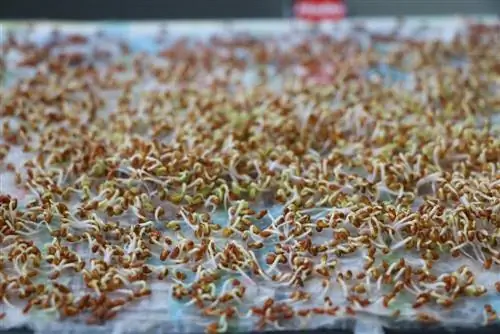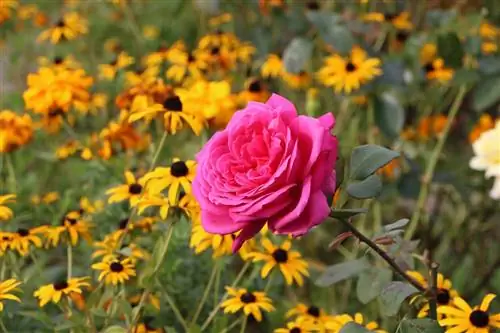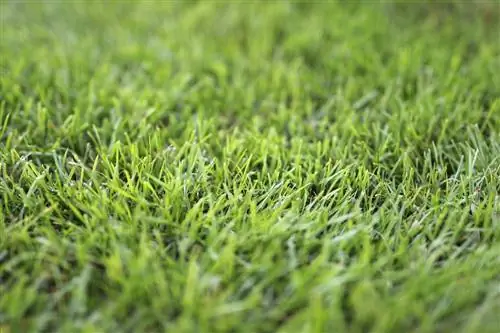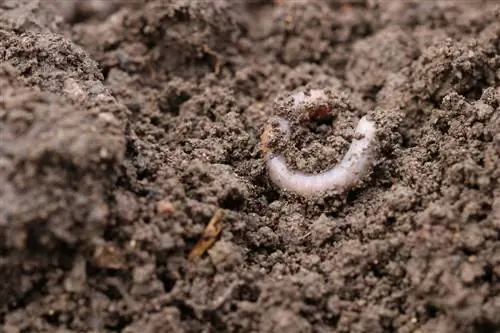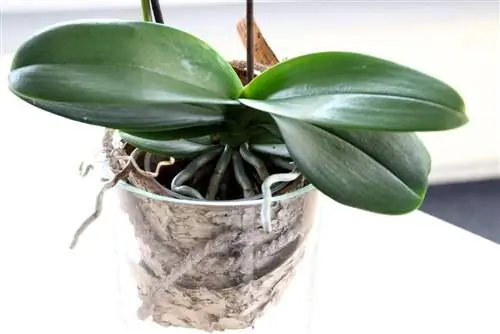- Author admin [email protected].
- Public 2023-12-17 03:39.
- Last modified 2025-06-01 06:48.
Cress is he althy and rich in vitamins. The cruciferous family is one of the most popular and well-known culinary herbs. The plants can be used in a variety of ways and, with their spicy heat, refine buttery sandwiches as well as salads, fish, meat, cheese and yoghurt. Garden cress probably comes from Asia and is a delicious nutritional wonder. The ingredients of the cultivated plants include vitamin C, B1, B2, E and carotene. Especially in winter, the plant strengthens the human immune system and can effectively help reduce the risk of colds to a minimum.
Tasty and he althy
The well-known culinary herb is a fast-growing spice; cultivation is guaranteed to be successful even without a “green thumb”. Young gardeners are particularly happy when the greenery of the freshly sown seeds sprouts vigorously within a few days and you can reap the reward for your patience after a short time. Lepidium, the botanical name for the genus of cress, is resilient. It's almost child's play to encourage the tasty culinary herbs to germinate. A variety of plants are sensitive to single-digit temperatures. The metabolism of these plants is shut down and growth stops. Cress is not affected by cold. At temperatures just above 5°C, the development of the cruciferous plants begins.
The culinary herb is an annual plant and can reach a final size of approximately 60 cm. Normally cress rarely reaches this height. This is because the intense, spicy taste decreases with increasing age and size of the plant. Lepidium can be harvested and consumed from a height of around 3 to 4 cm. The plant thrives in the garden from March to September. A specially prepared bed is not necessary for sowing; cress is easy to care for and can cope with almost all planting locations. The advantage of cress: The plants are undemanding and can be cultivated all year round on the windowsill or in a bright living room. In this way, fresh and vitamin-rich herbs are available to you at all times.
Growing on cotton wool
Garden cress has a decisive advantage over other plants: in the first two to three weeks, the plant does not need any organic substrate. In the first days of life, the cruciferous plant obtains the nutrients it needs for development from the seed depot. Water and light are the only two factors cress needs to grow. In this context, the decision as to which floor orSubstrate is necessary for Lepidium. Soft material is ideal for providing sufficient support for the plants' fine roots. In addition to kitchen paper, commercially available cotton wool has proven useful for growing cress.
The following components are required for growing cress without substrate:
- cress seeds
- Cotton
- Shallow bowl
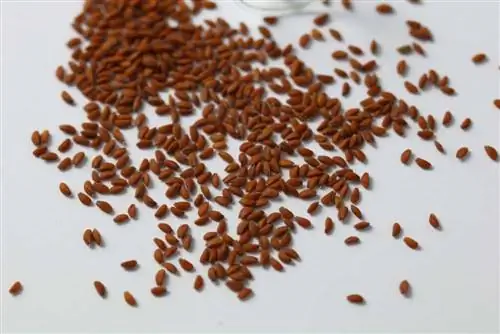
It doesn't matter what type of cotton you use. For example, you can use the inexpensive makeup remover material from the drugstore. Place the cotton wool in a container with water so that it can soak up sufficiently. After removal, a large part of the water is squeezed out again. This way you ensure that the cotton is completely damp. Lay the soft material generously in the container and sprinkle the cress seeds evenly over it. The seeds are fine, but you should still make sure that no “seed groupings” form. The well-known culinary herb is a light germinator. Do not cover the seeds with a second layer of cotton wool. This prevents germination and the entire cultivation fails.
Location and care
The cultivated plants need a bright planting location in order to germinate reliably. Place the container with cotton wool and seeds on a windowsill. A south-facing location with sunlight is suitable. However, there is a risk that the water will evaporate too quickly. Check the moisture content of the cotton regularly and, if necessary, moisten it again with a water sprayer. In winter, avoid being in close proximity to active radiators. The dry air in particular is extremely hard on the young seedlings and can lead to rapid wilting. If there is no other location for the plants, place the cultivation container on a thick layer of Styrofoam.
Tip:
Temperatures between 15° - 25° C are optimal for the germination and growth of cress.
It usually takes around 3 to 4 days until the first green shoot tips appear. Afterwards you can almost watch the herbs grow. Depending on the desired height, the first harvest of the tasty cress can take place 8 to 12 days after sowing.
Harvesting seeds
The cress sprouts are tasty and offer the opportunity to consume fresh vitamins all year round. The seeds of the well-known plant are commercially available. With a little patience you can forgo buying them and grow your own cress seeds. The prerequisite is that the plants can flower and form seed capsules. Do not use cotton wool, but use normal soil.
- Remove old plant parts and roots from the bed.
- Use permeable substrate.
- Choose a bright location.
- Work compost into the soil before sowing.
Cold and frost delay the germination of Lepidium and can lead to the death of the young seedlings. The seeds should only be sown outdoors after the ice saints or in a cold frame. Maintain a minimum distance of approximately 15 cm. If necessary, you can thin out plants that are too close together. Pricking out cress is difficult and unnecessary due to its rapid growth. Cultivating cress to obtain seeds is also possible in a large planter. The bucket should be kept in the garden. It is difficult to encourage the culinary herb to bloom on the windowsill.
In both cultivation variants, the soil must not dry out, but the roots of the plants must not be exposed to standing moisture. If cress is allowed to grow undisturbed, the culinary herbs can reach a height of up to 60 cm. After a few weeks, the flowers develop and can be used decoratively when preparing dishes. Leave the inflorescences untouched so that the small pods form after they bloom. As soon as the fruits have taken on a dark color, the seeds are ripe.
- Cut off the pods with sharp scissors.
- Shake out seeds.
- Allow to dry sufficiently in a dark place.
Store cress seeds
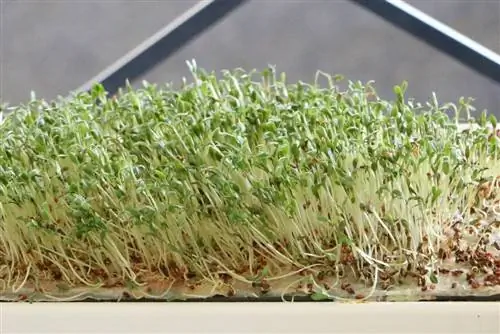
The seeds of Lepidium can germinate for up to 4 years. Place the dried seeds in an air-permeable container. For example, small bags made of cotton and paper bags have proven successful. The ambient temperature during storage should be low. Avoid damp places that could encourage cress seeds to germinate. These measures will allow you to safely store the seeds until they are next used.
Tip:
The plants must be resown after harvest. Unlike various other culinary herbs, cress does not grow back after being cut.
Varieties
The term “cress” covers three different types of cress that differ in color, size and taste.
Garden cress (Lepidium sativum): A delicate plant that germinates quickly and is ideal for growing in cotton wool.
Watercress (Nasturtium officinale): This variety is rather unsuitable for sowing on the windowsill. Watercress is an aquatic plant and is larger than garden cress.
Nasturtium (Tropaeolum): Due to its decorative flowers and leaves, this plant is often used to decorate dishes.
Conclusion
There is hardly any argument against growing cress on your home windowsill. The culinary herb is delicious and he althy. How robust and undemanding the plant is can be seen when sowing it on cotton wool. Even children have fun watching the tasty cress germinate and grow. Within a few days, the inconspicuous seeds become a tasty meal. Growing cress is simple and can be done almost anywhere.

